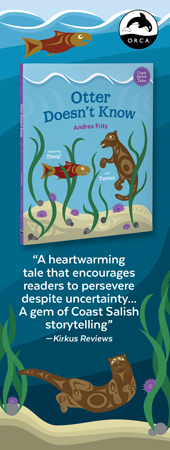All hail piffle
Owners and publishers of Canada's media are villains for failing to keep pace with the times, says Ian Gill.
October 12th, 2016

Ex-reporter Ian GIll bites the hand that fed him while decrying the devolution of Canadian media.
In No News Is Bad News he scathingly attacks complacency and greed.
The latest news about Canada’s print media is grim.
Maclean’s newsmagazine, over 105 years old and a weekly since 1978, will reduce its frequency to monthly. Chatelaine, around since 1928 and long-touted as Canada’s largest magazine in paid circulation, will be printed six times a year instead of monthly.
Today’s Parent suffers the same fate as Chatelaine. Other Rogers Media publications will cease to be printed altogether and instead will only appear online and through apps, including titles: Flare, Sportsnet, MoneySense and Canadian Business.
One of the few Rogers Media publications that will remain untouched by cutbacks is their celebrity gossip rag, Hello! Canada.
All hail piffle.
Whether it’s The Georgia Sraight or the once-dominant Vancouver Sun, Canada’s newspapers are also getting thinner. Puffery masquerading as content is increasingly common. Content that used to be labelled as “Advertorial” is losing that label altogether in some cases.
In No News is Bad News (Greystone $18.95), former newspaper editor and TV documentary reporter Ian Gill claims the “real villains” are “the owners and publishers.” He alleges dim-witted media owners “have bankrupted and/or destroyed the value of Canada’a great media companies, and they’ve been getting away with it for decades.”
One group that’s really been turned off by Canadian media are the millennials who, Gill says, have the least confidence in the media. Without them, he writes, “there won’t be two newspapers left in Vancouver – or in Calgary, Edmonton, or Ottawa – in just a few short years. In some cities there might not even be one.”
The loss of as many as ten thousand journalism jobs, he says, has hugely diminished the quality of our news. The erasure of billions of dollars of shareholder value from large media companies spells further decline. With the advent of “that darned thing called the Internet,” newspaper revenues, primarily from advertisers, are spiralling ever downwards. Gill quotes research that between 2000 and 2008 revenue drifted gently downward, but then in the next five years plunged another third, from $5.8 billion to $3.7 billion.
So who will cover all the crucial news beats and public meetings? Politicians? Corrupt businesses? Gill quotes a New York Times article asserting that “nonprofit news organizations, digital start-ups, university-based centers and public radio stations are beginning to fill the gap… But they probably won’t fully take hold while newspapers, even in their shrunken state, remain the dominant media players in local market.”
Much of Gill’s overview bristles with gleeful invective and scorn. “That giant sucking sound you hear?” he writes, “Oh, that’s just the implosion of Canadian media.” He dismisses local newspapers like those managed by the David Black chain foisting “truly execrable fare” on the public. He bashes the CBC with equal ease. Gill abhors the Walrus magazine as “a flaccid, self-satisfied kind of poor man’s New Yorker.”
Our media landscape is a horrid and almost hopeless mess. “It’s as if Canada’s journalists were assigned to cover a state funeral,” he writes, “and only now are wising up to the fact that the body in the casket is their own.”
The only smart people in Canadian journalism, it would appear, are Tyee columnist Ian Gill and his friend and collaborator David Beers, founding editor of the Tyee. They foresee the road ahead could or should be paved by philanthropies in Gill’s fourth and final chapter Wither the Future?, arguably the weakest section of Gill’s otherwise informative and highly entertaining romp.
Gill was able to undertake research for his analysis of Canadian media due to a senior fellowship in 2015 provided by the J.W. McConnell Family Foundation. If the future of high quality Canadian journalism can only be redeemed by having our best independent journalists cozying up to rich people and well-intentioned foundations, as Gill appears to suggest in No News Is Good News, some might argue the future of media in Canada will be even grimmer. But he has done a great service to the Canadian media community by providing this feisty diagnosis of Canadian journalism’s ills.
As he noted on a CBC Radio interview, if Canada’s roads and schools and hospitals fell into such decay, the public would not stand for it–and yet the news services of a nation are equally essential services to guarantee the well-being of a society.
So let’s at least start talking about it.
978-1-77164-268-2
– by Beverly Cramp
[Cover photo by Melanie Orr]



piffle: to talk or act in a trivial, inept, or ineffective way
and then you say: “But he has done a great service to the Canadian media community by providing this feisty diagnosis of Canadian journalism’s ills.
As he noted on a CBC Radio interview, if Canada’s roads and schools and hospitals fell into such decay, the public would not stand for it–and yet the news services of a nation are equally essential services to guarantee the well-being of a society.” Common Beverly seeps a lot less piffle that a lot of stuff some people have written since ’81!
but then we are in a post fact era it seems….anyway!